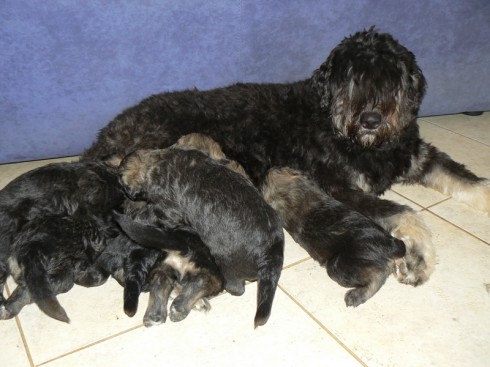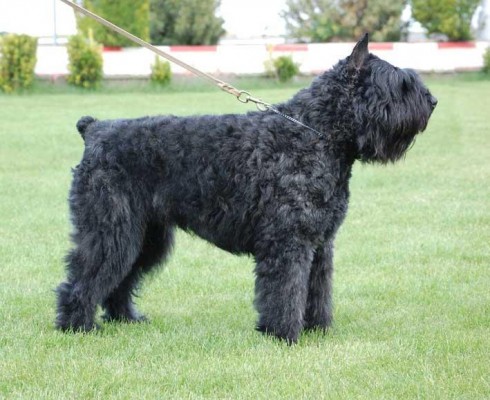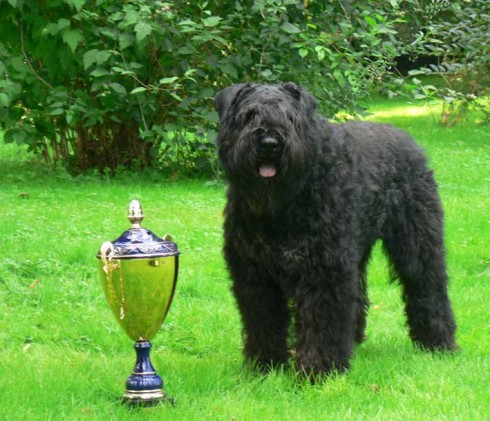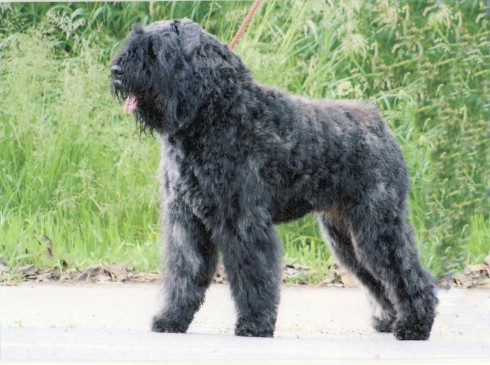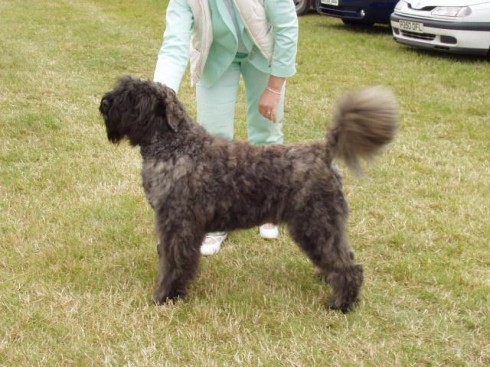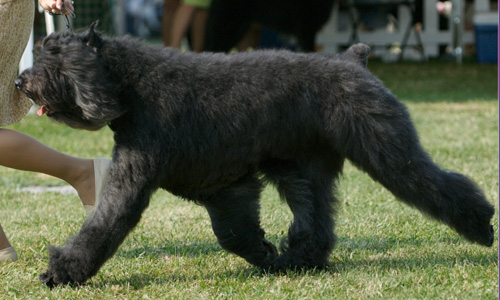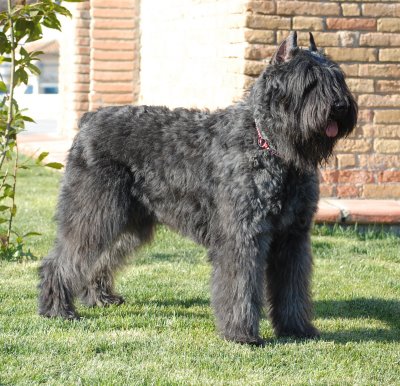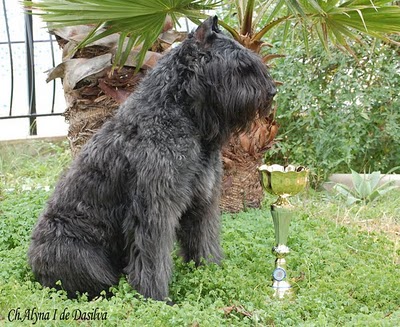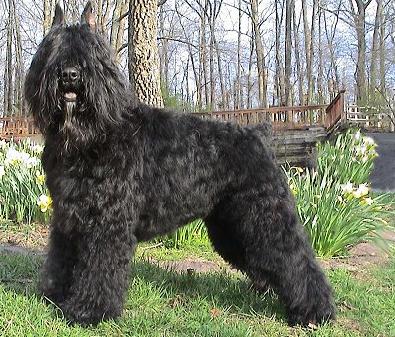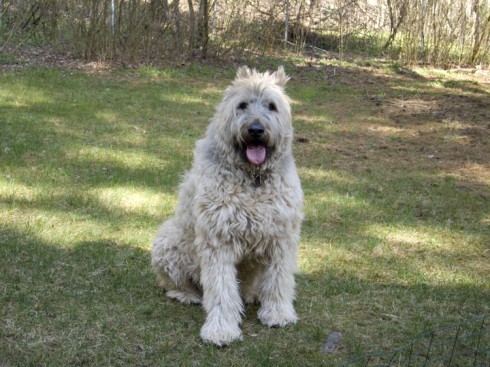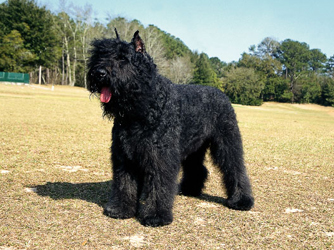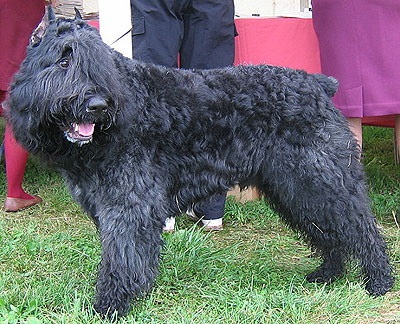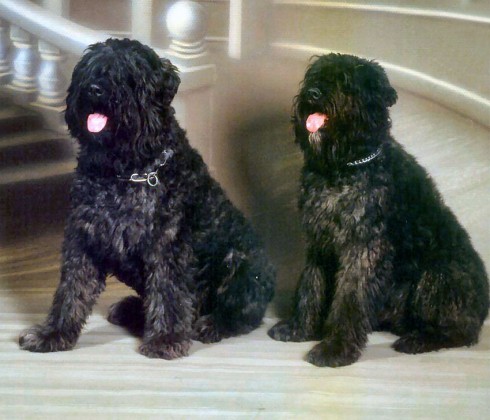Main Index
In Store
Our Web Store
Miniature Schnauzer Picture Gallery
Latest Dog Blogs
- What Are The Basic Commands To Train A Dog?
- PaySafe As The Most Popular Type Of Deposit
- Everything You Need To Know About Pet Sales
- Dogs Contribute To Our Physical And Mental Well Being
- How To Choose Where To Bet On Greyhounds In 2022
- Volunteer With Animals - How To Help Dogs Around The World
- Basic Understanding Of The House Edge
- Why You Should Get A Dog
- Top 20 Popular Dog Names Around The World
- Constipation in Dogs and How to Find Solutions
Bouvier des Flandres
Bouvier des Flandres Picture Gallery
Bouvier des Flandres Clubs/Associations
The Full Bouvier des Flandres Description
Bouviers are big and big-hearted. They are strong and can think for themselves. The Bouvier is protective. He can sometimes be suspicious of other dogs. While he's not overly active in the house, he does need plenty of exercise. Country or suburban living suits him well.
Did you know?
A standard of the Bouvier type was not adopted until 1912. That was accomplished by a Frenchman, Mr. Fontaine, vice-president of the Club St. Hubert du Nord.
So you want to own a Bouvier des Flandres?
The Bouvier des Flandres has long been prized for his remarkable abilities as an all purpose farm dog. Cattle driver, messenger, guardian, and protector, the Bouvier is a versatile dog.
He has a rough harsh tousled coat that requires regular brushing to help keep shedding to a minimum.
The Bouvier is a natural guard dog, but he is not an attack dog. He is a tolerant dog who enjoys the company of children.
Indicative Breed Standard
General Appearance
Compact body, short-coupled, powerfully built, well boned, strongly muscled limbs, giving impression of great power but without clumsiness in general deportment.
Characteristics
Lively appearance revealing intelligence, energy and audacity. Its harsh beard is very characteristic giving forbidding expression.
Temperament
Calm and sensible.
Head and Skull
In proportion to build and stature general impression is of massiveness, accentuated by beard and moustache. Head clean cut. Skull well developed, flat, somewhat longer than wide. Proportions of skull to muzzle are 3:2. Stop shallow, but appears deep due to upstanding eyebrows. Muzzle broad, powerful, well boned, straight in upperline, sloping slightly toward nose which should never become pointed. Circumference measured just in front of eyes approximately equal to length of head. Nose should be very well developed, thus extending the foreface in a slightly convex line towards its tip, rounded at edges, always black. Nostrils wide. Cheeks flat and clean.
Eyes
Alert in expression. Neither protruding nor sunken. Slightly oval in shape and horizontally placed but not too close together. As dark as possible in relation to coat colour. Light or wild-looking eyes highly undesirable. Eyes always black, lack of pigmentation undesirable. Haw never visible.
Ears
Set on high, very flexible, triangular and in proportion to head.
Mouth
Jaws strong. Teeth strong and white with a perfect, regular and complete scissor bite, i.e. upper teeth closely overlapping lower teeth and set square to the jaws.
Neck
Strong, well muscled and thickening slightly towards shoulders. A little shorter than length of head, nape strong and slightly arched. Without dewlap.
Forequarters
Forelegs very strong and absolutely straight. Shoulders relatively long, muscular without heaviness, obliquely placed. Shoulder blade and upper arm of equal length. Elbows well set into body and parallel, turning neither in nor out. Forearms, seen from front or side, straight, parallel to each other, perpendicular to ground. Well muscled, heavy boned. Pasterns strong, fairly short, sloping very slightly.
Body
Short, strong, deep, broad, compact with very little tuck-up. Length from point of shoulder to point of buttock about equal to height at withers. Chest descends to level of elbows and is not cylindrical, although ribs well sprung. Croup extends horizontal line of back, blends imperceptibly with curve of rump; broad but not excessively so in dogs, broader in bitches. A rising croup, or one which falls away very definitely undesirable.
Hindquarters
Moderate angulation, firm and well muscled, with large, powerful thighs. Legs strong and sturdy with hocks well let down and perfectly perpendicular when viewed from rear. No dewclaws.
Feet
Short, round and compact. Toes tight and well arched. Nails black and strong. Pads thick and hard.
Tail
Customarily docked or may be born tailless.
Docked: Docked to 2-3 vertebrae.
Undocked: Continuing normal line of vertebral column. Carried gaily when moving. In overall balance with the rest of the dog.
Gait/Movement
Powerful, driving, free and easy; ambling permitted but not desirable.
Coat
Abundant, so thick that when separated by hand skin barely visible. Hair coarse to touch, dry and matt. Neither too long nor too short (about 6 cms (21/2 ins)). Unkempt-looking but never woolly nor curly, gradually becoming shorter as it comes down the legs, always harsh. Flat coat denoting lack of undercoat highly undesirable. Undercoat dense and close grained. On head shorter, outside of ears very short. Upper lip well moustached, lower carrying a full harsh beard giving forbidding expression so characteristic of breed. Eyebrows formed of backward-sweeping hairs accentuating shape of eyebrows but never veiling eyes.
Colour
From fawn to black including brindle. White star on chest permissible. White predominating or chocolate brown highly undesirable. Light washed-out shades undesirable.
Size
Height: dogs: 62-68 cms (24½-27 ins); bitches: 59-65 cms (23-251/2 ins). Weight approx: dogs: 35-40 kgs (77-88 lbs); bitches: 27-35 kgs (59-77 lbs).
About Our Article Directory
- Article
- 27 November 2010
- 2 comments
Canis lupus familiaris
- Breed Article
- 29 May 2010
- No comments
Quick Search
Donate
Latest Dog Pods
- Tips on How to Stop Your Dog from Biting
- Beware - Not All Advertised Dog Rescues Really Are! How Can You Know The Truth?
- Helpful Tips For Dog Obedience Problems
- How to Keep Dogs From Eating Poop
- Dog Grooming Tips - A General Overview of the Very Basics of Dog Grooming
- Recognising Different Types of Dog Obedience Problems
- 5 Important Tips On Feeding A Puppy


